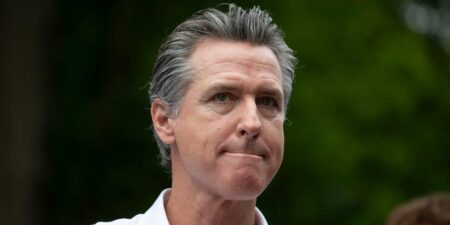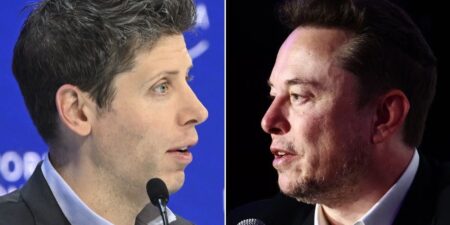The Teamsters last week declined to back Vice President Kamala Harris or former President Donald Trump, marking the first time since 1996 that the union has not endorsed a presidential candidate.
It came as a shock to many Democrats. The Biden administration is strongly allied with organized labor and helped shore up the Teamsters pension fund to the tune of roughly $36 billion.
Rep. Alexandria Ocasio-Cortez was none too pleased with the Teamsters’ non-endorsement and expressed her dissatisfaction with the leadership of Sean O’Brien, the union’s president.
“I’m very disappointed in Sean O’Brien’s leadership,” the New York Democratic lawmaker told CNN’s Manu Raju last week. “I have found it increasingly alarming all year.”
“When the Teamsters are in trouble, who do they call when we need to make sure that Teamsters pensions are bailed out? … It was Sean O’Brien calling Democrats for help,” she continued.
Ocasio-Cortez’s remarks reveal just how much unions will matter in this election — especially with organizing and turnout efforts. And the consequential decision from the Teamsters has only heightened the efforts of both parties to make their case to rank-and-file members.
The Teamsters divide
O’Brien last week told The Hill that the Teamsters won’t back Harris or Trump because the union “couldn’t get commitments on our issues” from either candidate.
In a CNN interview, O’Brien hit back at Ocasio-Cortez, saying the congresswoman “should maybe get into her district where it voted far-right Republican.”
O’Brien was referring to what he said were the results of union membership polling in her 14th Congressional district, where he said members overwhelmingly backed Trump.
When Biden was still the presumptive Democratic nominee earlier this year, he edged out Trump via in-person straw polls among members (44.3% to 36.3%), according to the Teamsters. But in a national electronic poll that was open from from July 24 through September 15, Trump held an advantage (59.6% to 34%) over Harris among union members.
In a separate union survey, Trump also led Harris — this time 58% to 31%.
O’Brien later said of Ocasio-Cortez: “She may want to focus on her job instead of mine.”
Shortly after O’Brien’s CNN interview, Ocasio-Cortez responded to the union leader, arguing that Teamsters in her district were lined up behind Harris and her vice-presidential running mate, Minnesota Gov. Tim Walz.
“The NY-14 Teamsters mentioned here have actually voted overwhelmingly to endorse Harris-Walz. Just as Teamsters in Michigan, Nevada, and Pennsylvania have, too,” she said on X. “It’s a big thing to be wrong about. So let’s set the record straight: Teamsters Local 202 are all in for Harris.”
The congresswoman attached a letter from the New York City-based Teamsters Local Union No. 202, which said its executive board “unanimously” backed Harris and Walz.
After O’Brien’s announcement last week, a slew of Teamsters regional councils — which include thousands of members and retirees in key states like Michigan, Pennsylvania, and Wisconsin — threw their support behind Harris.
The Upper Midwest will be critical in November
James P. Hoffa, who was the president of the Teamsters for 23 years before his retirement in 2022, said in a statement that the union’s non-endorsement was a “critical error.”
“There is only one candidate in this race that has supported working families and unions throughout their career,” he said. “And that is Vice President Kamala Harris.”
Trump, who is seeking to win over more union members this year, took a victory lap after the O’Brien announcement.
“The Teamsters carry a lot of weight,” the ex-president told reporters last week. “The Democrats cannot believe it. Look, it was always automatic that Democrats get the Teamsters, and they said, ‘We won’t endorse the Democrats this year,’ so that was an honor for me.”
The tug of war for union support reflects the high stakes for both candidates, particularly in the Upper Midwest, where organized labor has long been a robust political force.
Trump in 2016 won the presidency in part because of his appeal with a critical bloc of union households in Michigan, Pennsylvania, and Wisconsin — all swing states that are core parts of the Democratic “blue wall.”
The former president won all three states that year, but Biden flipped them back into the blue column in 2020.
This year, both Trump and Harris are aiming to win these battleground states, with the ex-president touting his support for protectionist trade measures and the Democratic nominee stressing that her staunch support for labor would mirror that of Biden should she win the White House.
Read the full article here
















